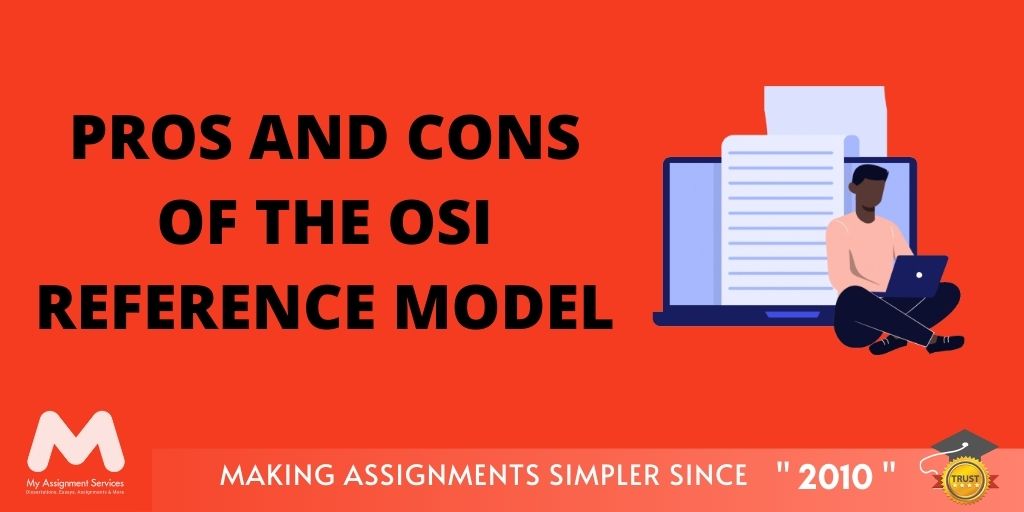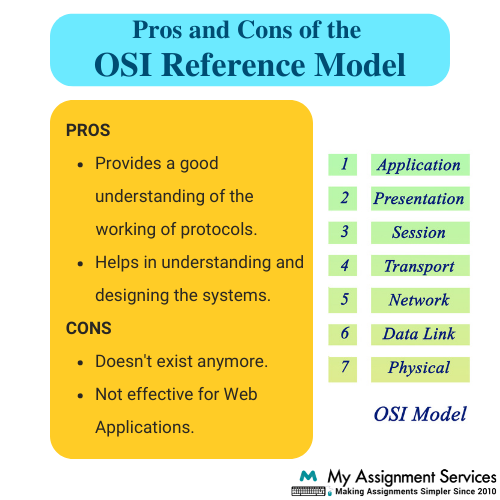
Imagine you're trying to learn about the Internet, and when you look at it from a different perspective, like understanding its functioning and operations. This new perspective can change how you see things and even make your understanding better than before. Well, the same thing is true with the Open Systems Interconnect (OSI) Reference Model. When looking at the OSI model, it's not just an academic exercise but something that has practical applications. If you decide to use this model, there are pros and cons to doing so that must be considered first. The OSI model is a conceptual framework that provides a reference point for describing the functions of computer networks. It was first introduced in 1984 by ISO, which published it as an international standard.
The OSI reference model is a method of network communication and network definition. The top layer is the application layer, which defines the specific protocols for each application. The next layer down is the transport layer, where data is sent from one machine to another. This layer's job is to make sure that data can travel through a network reliably and securely. Now, you might be wondering what this has to do with security. Well, for one thing, it studies how different devices can interact with one another to move information around a network in a way that protects both sides from interference from other machines or devices.

With the IT industry growing at an exponential rate, a new approach to buying and selling software is needed. This can be achieved by making use of a model that has been used by many industries for years. This model is known as the Open Systems Interconnection Reference Model. It allows businesses to understand the behaviour of different networking components so they can make informed decisions about their choices and configurations.
The Open Systems Interconnection reference model is used to describe the protocol layers of computer networks. It was developed by the International Organization for Standardization and is managed by the International Electrotechnical Commission, which is a non-profit organization dedicated to developing standards. The OSI reference model forms the basis of most information technology standards today and remains popular due to its broad adoption across industries and countries.
The OSI model is a reference model for communication that was first introduced in 1983 by the organization "Open Systems Interconnection", commonly known as OSI. The OSI reference model divides information, from the lowest layer up to the highest layer, into seven layers, including
Each of these layers has its own set of tasks to complete during communication.

Assignments based on information and communication technology have their own level of technicality. Whenever a scholar must do networking assignments, they don’t have to rely upon theoretical aspects as the practical implications of the concepts are always in play. That's why such assignments become tricky and typical for students, and they seek assignment help. This is where My Assignment Services has come to the rescue. My Assignment Services is a globally renowned assignment writing service company that provides students with assignment help in whichever subject they require. The organization is home to hundreds of experts who assist scholars in completing their assignments and guide them in their future academic pursuits. So, what are you waiting for? Contact us now!

1,212,718Orders
4.9/5Rating
5,063Experts
Turnitin Report
$10.00Proofreading and Editing
$9.00Per PageConsultation with Expert
$35.00Per HourLive Session 1-on-1
$40.00Per 30 min.Quality Check
$25.00Total
FreeGet
500 Words Free
on your assignment today
Get
500 Words Free
on your assignment today
Trending now
The Student Corner
Subscribe to get updates, offers and assignment tips right in your inbox.
Popular Posts
Popular Posts
Doing your Assignment with our samples is simple, take Expert assistance to ensure HD Grades. Here you Go....
Speak directly with a qualified subject expert.
Get clarity on your assignment, structure, and next steps.
In this free session, you can:
Loved reading this Blog? Share your valuable thoughts in the comment section.
Add comment